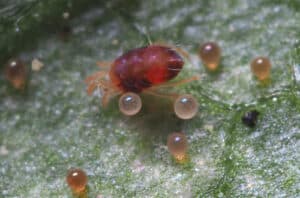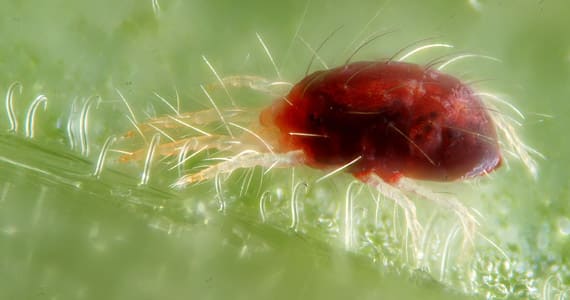The balance of an ecosystem depends on the survival of the living beings that constitute it, in particular green plants. However, there are organizations that represent a permanent obstacle to the well-being of the latter. Among these organisms is the spider mite. What is spider mite, how to recognize it and how to eliminate it? The rest of this article provides answers to all these questions.

What is a spider mite?
Spider mites are not true insects, but are classified as arachnids, parents of spiders, ticks and scorpions. Adults are reddish-brown or pale in colour, oval in shape and very small (1.5 cm long). They are about the size of the dot at the end of this sentence. Immature stages resemble adults, but are smaller.
Many species of spider mites attack indoor and outdoor plants. Spider mites can be especially destructive in greenhouses. These mites live in colonies, mainly on the underside of the leaves, and feed by piercing the tissues of the leaves and sucking fluids from the plant. Feed marks are in the form of clear dots on the leaves.
Spider mites are more common in hot, dry conditions, especially when their natural enemies are victims of extermination by the use of insecticides. Some of the many species common in North America are predators of phytophagous mites, which make up the vast majority. They are also very prolific, which is why large infestations often go unnoticed before the plants begin to show damage.
What is the life cycle of the spider mite?
Most species of mites spend the winter as eggs on the leaves and bark of host plants. In early spring, when temperatures warm up, tiny six-legged larvae begin to hatch and feed for a few days before seeking shelter where they turn into the first nymphal stage. Nymphs have eight legs and go through two more moults before becoming mature adults.
After mating, females continuously produce up to 300 eggs in a few weeks. Hot, dry weather promotes the rapid development of these parasites. Under these conditions, the transition from egg to adult can be done in just 5 days. Many generations overlap per year.
Damage caused by spider mites
Spider mites, almost too small to be seen with the naked eye, pass through the gardens without warning. Also, few in number, they survive by sucking matter from plant cells. If feeding continues, the leaves turn yellow and may dry out and fall off.
This is because large infestations cause visible damage. The leaves first have patterns of tiny spots or dotted lines. They can change color, curl and fall. The activity of mites is visible in the tight webs that form under the leaves and along the stems.
On annual vegetable crops such as squash, melons and watermelons, leaf loss can have a significant impact on yield and lead to sunburn.
On crops such as sugar peas and beans, where pods are attacked, spider mites can cause direct and rapid damage. On ornamental plants, spider mites are mainly an aesthetic problem, but they can kill plants if populations become very high on annual plants. Spider mites are also important pests of roses grown in the open field.

How to fight against spider mites?
The use of chemical pesticides actually promotes the spread of spider mites by the extermination of beneficial insects that feed on them. Spider mites are also known to rapidly develop resistance to various pesticides. For these reasons, it is important to combat spider mites with effective natural and biological methods.
To do this, you can contact Delta Extermination a company specializing in the extermination of pests such as spider mites. They mainly deal with decontamination and extermination in Quebec.
You can also prune leaves, stems and other infested parts of plants far beyond any canvas and throw them in the trash (not in compost piles). Do not hesitate to pull out whole plants to prevent mites from spreading to their neighbors.
Use a strong jet of water to reduce the number of parasites. Insecticidal soap or botanical insecticides can be used to occasionally treat heavily infested areas.
Finally, horticultural oil should be applied to fruit trees at the beginning of the season or in late autumn to destroy overwintering eggs.








Recent Comments